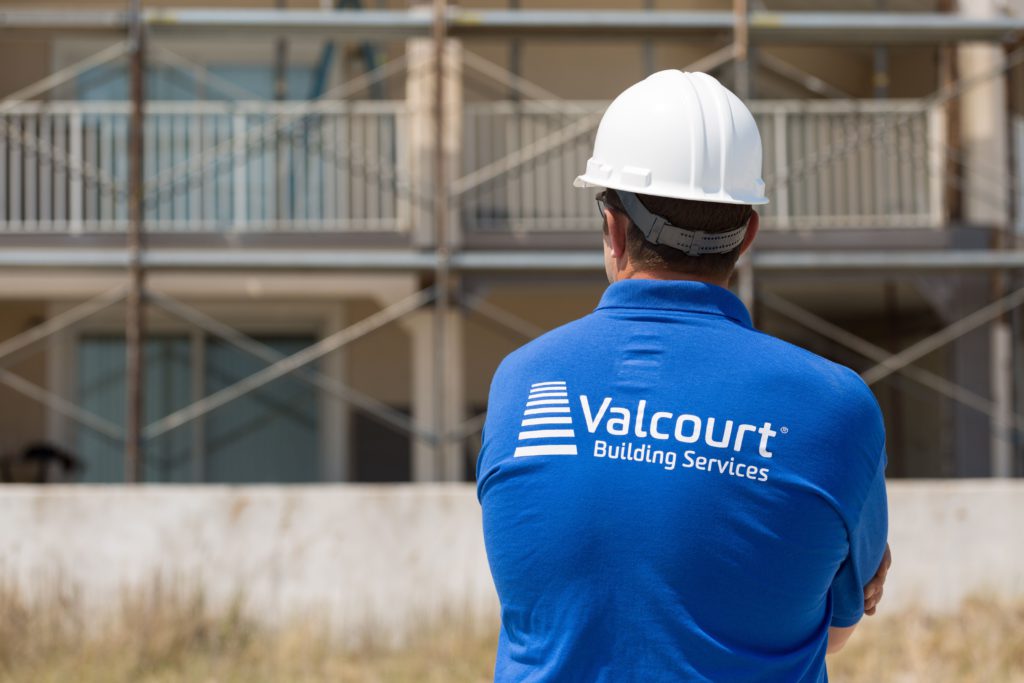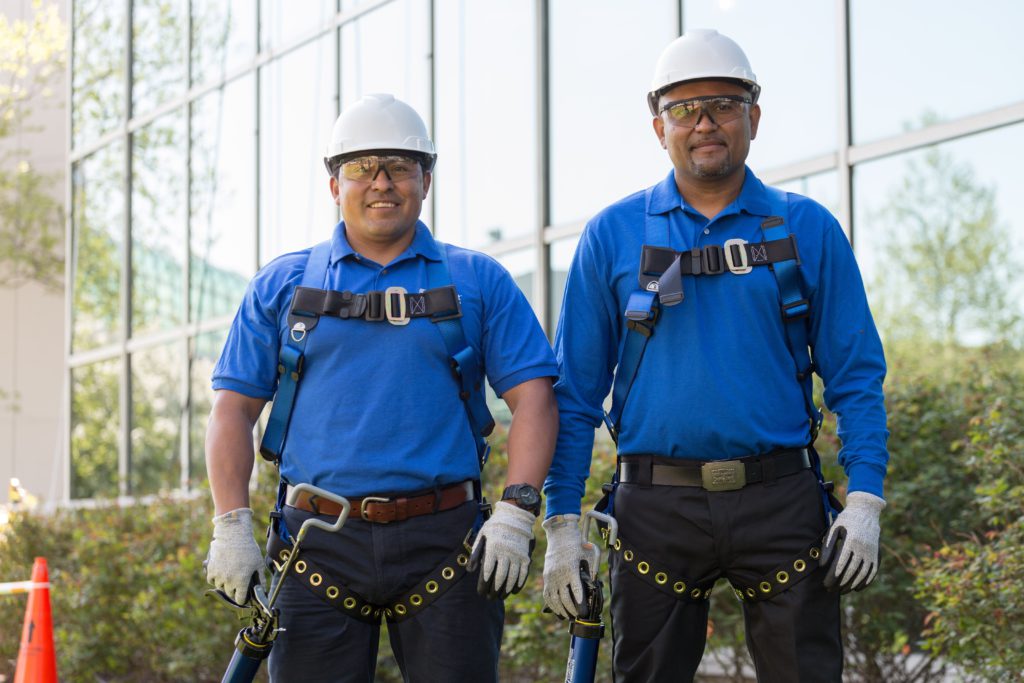Mar 19, 2024
What is the key to building longevity? For the Romans, with structures still standing 2,000 years later, it was self-healing concrete. In the U.S., where the average age of commercial buildings qualifies them for an AARP card, the key to longevity is preventative maintenance.
Sealants protect buildings and prevent water, air, and other environmental elements from seeping in and wreaking havoc. When left unchecked, external elements can significantly damage your building’s structural integrity and shorten its lifespan. This article will guide you through the optimal timing to replace building sealant, signs of sealant failure, and actionable advice to ensure your building’s longevity and aesthetic appeal.
Building Sealant Application and Lifespan
Most commercial buildings in the U.S. are in the “old-age” phase of the building life cycle, with an average age of over 53. A condo in Honolulu shows that buildings have the potential to last hundreds of years through a proactive approach and by addressing warning signs before they lead to significant problems.
Sealants aim to keep unwanted water, pests, and potentially hazardous pathogens at bay. These applications are an industry staple, but they don’t last forever. They require inspection, reapplication, and replacement to ensure effective weatherproofing and waterproofing. There are two main types of sealants to consider, each offering distinct advantages.
Silicone sealants are known for their durability, flexibility, and resistance to temperature variations and UV light, making them ideal for use on glass, metal, or tile surfaces. More of a joint compound than a sealant, silicone dries fast and can last up to 20 years or more, depending on the environmental conditions.
Polyurethane sealants, on the other hand, are better suited for natural surfaces like wood or stone due to their strength and adhesion. While polyurethane sealants are true sealants, they typically have a shorter lifespan than silicone, ranging from 5 to 10 years, and take longer to cure and dry.
Your building service provider can help you choose the proper sealant based on environmental exposure, scope of work, desired longevity, and upkeep.
Signs It’s Time to Replace Building Sealant
Building inspections are an ideal time to look for indicators that the sealant is failing. At the minimum, these inspections should occur annually. Factors such as building age, environmental exposure, and problematic areas require more frequent inspections.
Here’s what to look for when inspecting your building sealants:
1. Is the surface of the sealant cracked or alligatored?
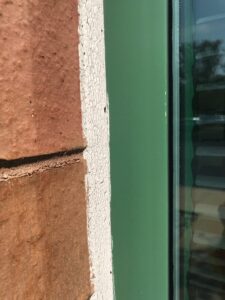
2. Are there cracks, punctures, discoloration, or missing sealants on the building exterior and/or window perimeters?
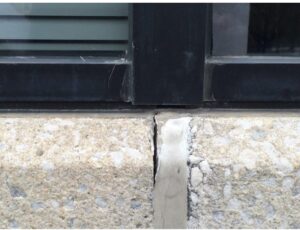
3. Has the existing sealant become hardened?
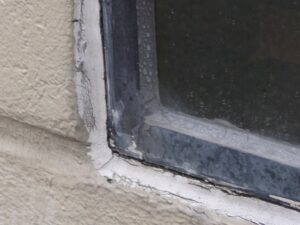
4. Are any sealants separated from the substrate/wall or window/door perimeters?
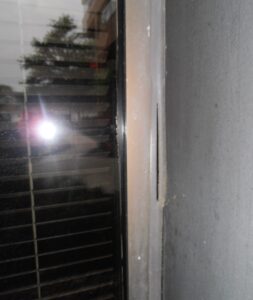
5. Is the sealant reverting to a soft/tacky state?
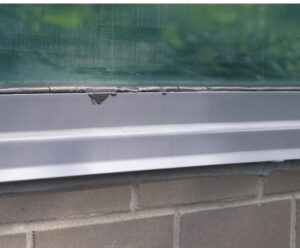
6. Is there any evidence the joints have been skimmed over?
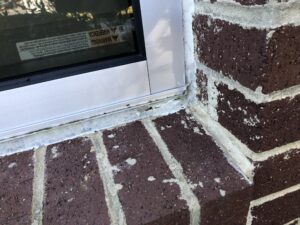
Catching a problem early makes all the difference in remedying it. Leveraging technology like drones to record video allows you to capture photos to document how well your building is aging, plan for capital improvement projects, and give you an idea of how long an issue has persisted.
ROI and Value of Proactive Sealant Replacement
Regular inspections and proactive sealant replacement deliver ROI savings on energy costs, prevent extensive damages, and avoid tenant disruptions. The Onslow Memorial Hospital, located in Hurricane Alley, relies on waterproofing in the face of relentless weather to ensure services aren’t interrupted for the patients they care for.
In Valcourt’s webinar “Unlocking Hidden Value: How to Optimize Your Facilities Budget,” Adam Hibshman of ProXpress shares a real-world example of how passing on a minor painting and sealant can balloon repair costs. In two short years, minor repairs became extensive as the damage permeated the interior, adding another $105,000 to repair costs and nearly doubling the original quote.
The ROI in this case is clear – taking preventative measures such as sealant replacement can save thousands of dollars in potential damages. But it’s not just about the cost savings; it’s also about maintaining a safe and functional space for tenants and employees.
Implementing a Proactive Sealant Replacement Program
The Department of Energy’s (DOE) Building Technology Office is trying to match the Romans by developing a self-healing sealant of their own. This innovation has great potential in minimizing costs and extending the life of buildings. However, until this miracle product becomes a reality, implementing a proactive sealant replacement program is your best bet for preserving building integrity.
- Routine Inspection Schedule: Establish a regular schedule for sealant inspections, focusing on areas known for water infiltration and environmental wear.
- Documentation and Tracking: Record inspection dates, document findings with photos, and actions taken. Thorough documentation ensures consistency, aids in planning future maintenance, and provides a historical record of sealant performance.
- Professional Consultation: Engage with building service providers to assess your building’s specific needs, recommend the best sealant options, and ensure proper application for long-lasting protection.
Implementing this program involves periodic maintenance and responding proactively to the earliest signs of wear or damage, such as cracking, discoloration, or detachment from the substrate. By partnering with specialists, you can tailor effective strategies for sealant maintenance, ensuring your building remains secure, functional, and visually appealing.
A Proactive Sealant Strategy for Building Longevity
The longevity and resilience of your building rest significantly on the strategic replacement of sealants. Proactive maintenance curbs potential damage and delivers considerable return on investment, safeguarding your property’s aesthetic and structural integrity.
Enhance your building’s integrity with our Building Facade Assessment Tool, featuring a comprehensive section on joint sealants. This resource allows you to visually identify maintenance needs and provides a detailed report.
Don’t wait for minor concerns to escalate into costly repairs; explore our tool now to prioritize your building’s longevity.





 We’re excited to have LaWon Griffin as the General Manager of Waterproofing, Georgia! LaWon holds a Bachelor’s degree in Business and Accounting from Pensacola Christian College as well as a Master’s degree in Project Management from Keller Graduate School of Management.
We’re excited to have LaWon Griffin as the General Manager of Waterproofing, Georgia! LaWon holds a Bachelor’s degree in Business and Accounting from Pensacola Christian College as well as a Master’s degree in Project Management from Keller Graduate School of Management.

